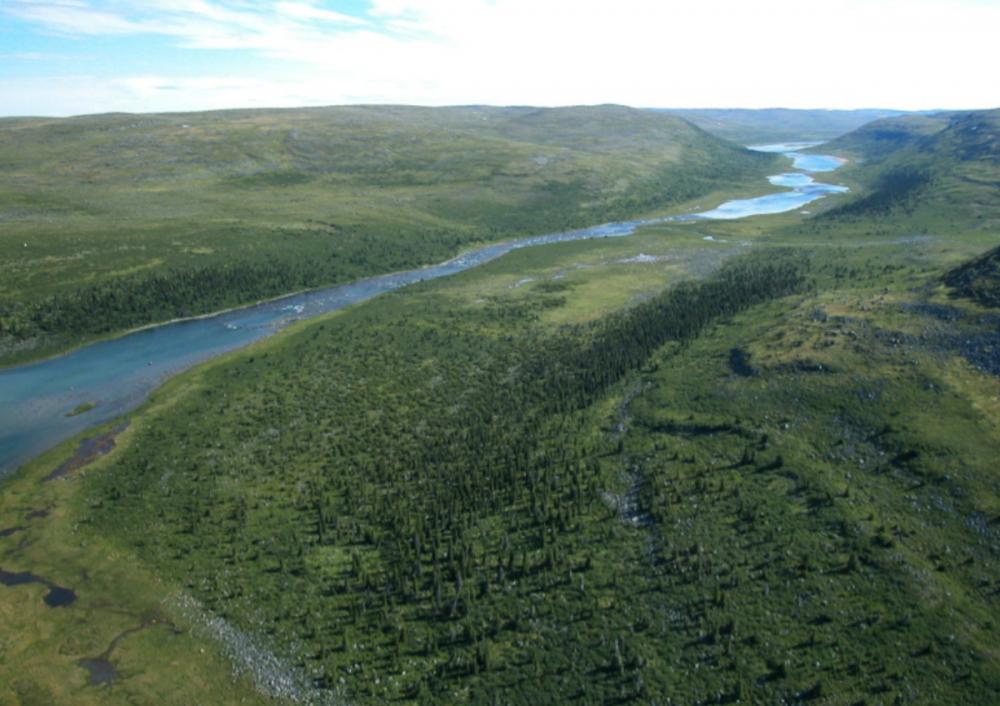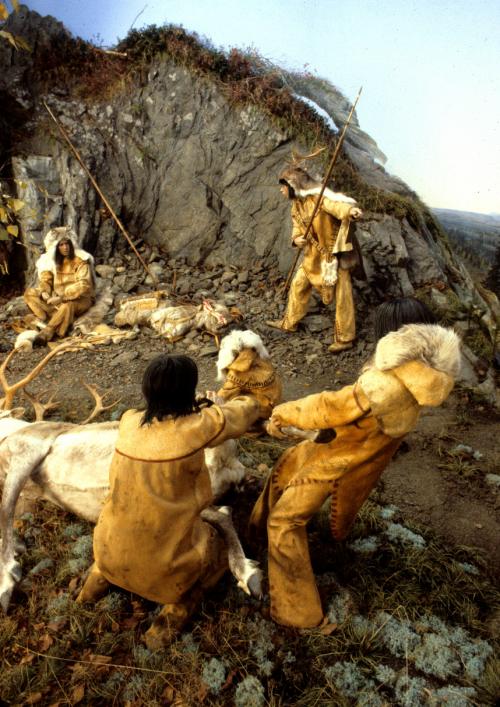Late Pleistocene Lifeways
New Yorkers today would barely recognize their state when it was first colonized by Native Americans about 13,000 years ago. As the Pleistocene era was ending, northward-retreating glaciers and catastrophic meltwater floods had scoured the state, the Atlantic coastline was retreating before rising sea levels, a vast inland sea flooded the St. Lawrence Valley and Champlain basin, and spruce parklands covered much of New York. Known to archaeologists as Paleoindians, these peoples probably immigrated into New York along river valleys from the west or south, perhaps drawn by resources of the Hudson Valley and the Champlain Sea.

Northern New York, 13-12,000 years ago, likely resembled this modern aerial view of northern Québec (photograph courtesy Dr. Serge Payette, Université Laval).
Today, we are trying to understand the lifeways of these Paleoindian peoples on several fronts.
Perhaps most importantly, we are actively investigating Paleoindian sites and studying artifact collections. Documenting the locations of these discoveries tells us how they were using the New York region: mining toolstone at outcrops in the Hudson Valley, trekking the Ontario Lake Plain, and visiting Late Pleistocene dune fields on proglacial lake beds west of Albany.
For chronological control, in the absence of radiocarbon dating, we devote special study to stone weapons tips (known as fluted points) as time-sensitive age indicators of Paleoindian sites. Other analyses of Paleoindian stone tool collections provide glimpses of life at their small campsites, and reveal adaptive qualities of their stone tool kit.
We are also building a state-wide comparative database on Paleoindian point finds and sites (see NYPID project), and encourage professional and avocational archaeologists to join us in this effort. In the long view, such databases will be one key to advancing our understanding of this unique Late Pleistocene life way.
Selected Publications
Lothrop, Jonathan C., and James Bradley
2012 Paleoindian Occupations in the Hudson Valley, New York. In: Late Pleistocene Archaeology and Ecology in the Far Northeast, edited by Claude Chapdelaine, pp. 9-47. Texas A&M University Press, College Station.
Lothrop, Jonathan C., Paige Newby, Arthur Spiess, and James Bradley
2011 Paleoindians and the Younger Dryas in the New England-Maritimes Region. Quaternary International 242 (2): 546-569.




